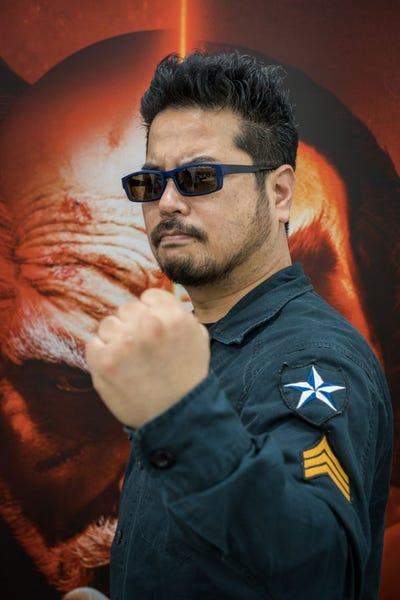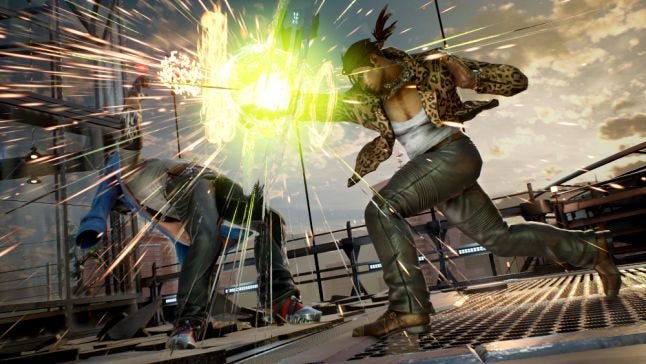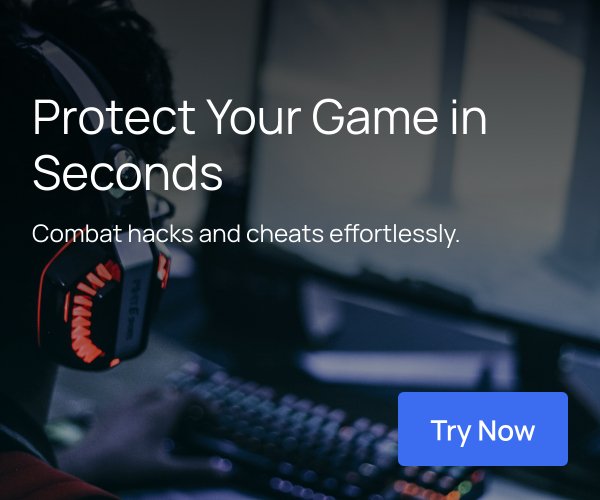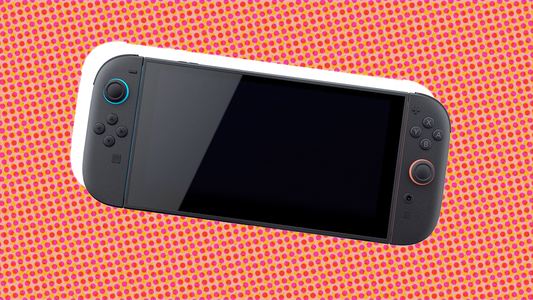Katsuhiro Harada has been making Tekken games for a long, long time. He had been the series producer since its inception in 1994, so if anyone has perspective on the series and its place in the pantheon of fighting games, it’s him. Frankly, he’s one of the better people to speak to about the history of fighting games as a business, period.
Tekken has always done its own thing, as a series. It was one of the first major 3D fighting games. It’s one of the first to feature extensive story, and each version adds crazy extras, from RPG modes, to extensive character creators, to simpler crowd-pleasing elements like the super slo-mo.
As Tekken 7: Fated Retribution continues the expansion of the series, Harada wants to make sure everyone knows the series has not only never gone away, it’s also the best-selling fighting game series in the world, no matter what anyone else may think.
In this extended interview, we discuss how Tekken is always arcade first, how the series made preparations for input lag beginning with the shift to LCD screens, and how to please both competitive and casual players simultaneously.
We're kind of having a fighting game boom right now, with Street Fighter over on the eSports side, BlazBlue et al on the anime side, Injustice, KI, and Mortal Kombat on the "American" side... where does Tekken fit in to this, and what do you think it will take for the genre to remain strong? The last time there were this many decent fighting games, it led to the fall of the genre in the 90s.
 Many people see this kind of history through their own filter of preconceptions and are unable to correctly understand the situation.
Many people see this kind of history through their own filter of preconceptions and are unable to correctly understand the situation.
One of Tekken’s strong points is that it mostly unaffected by the boom in fighting games (it obviously benefited to some extent, but what happened after that is more important). Many fighting games disappeared after the 90’s and early 2000, or they went into hiatus.
Even Street Fighter had a 10-year absence in between 3 and 4, but many people have forgotten this. However, during that time, we were methodically growing the franchise. In the 23-year history of the franchise, we started at a certain point to analyze the economic potential of the fighting game genre. As many titles disappeared or took a break, or even left the arcade scene, Tekken was consistently released first in arcades, and then on consoles.
As a result, Tekken has sold almost 46 million copies worldwide on console to date, making it the top seller in its genre. If you include the number of arcade boards and income from the arcade, the franchise takes an even larger lead over its competitors.
In the ‘90s, that wasn’t yet the case and we were still chasing the fighting games that came before us. Games that sell well in the US tend to give the appearance that the title is a hit worldwide. Tekken sells the most in Europe, with sales in the US coming in second (however, US sales are the largest of a single country). Tekken also does well in Oceania and Asia, so it sells quite evenly around the globe.
"We realized the audience was quite segmented. There were the hardcore players who liked the competitive elements, but also a very casual audience as well. Some people were only interested in the story."
More than 20 years ago, when there were already strong fighting game titles like Street Fighter, King of Fighters, and Virtua Fighter, my boss (along with upper management) often asked when we would catch up, and even surpass these rivals (in terms of sales). I said to them that it wouldn’t be easy and would probably take 10 years, but that if we planned in a way that didn’t rely on the popularity of the genre itself, that we would eventually come out on top.
Their answer was for me to continue until we win, or until the franchise ceases to be economically viable. I naturally felt quite a bit of pressure when told this. During the boom in fighting games, many different companies created many different fighting games, but the majority of them disappeared. It was clear they wanted to make pure fighting games.
At the time, we also wanted to make a pure fighting game, and did our best to catch up with and surpass rivals like Street Fighter and Virtua Fighter. We strived to create a solid fighter that was extremely balanced and geared towards competitive play. But partway through, we realized something. Who exactly was supporting the genre, or more specifically, Tekken.
We realized the audience was quite segmented. There were the hardcore players who liked the competitive elements, but also a very casual audience as well. Some people were only interested in the story. Not everyone was trying to be the top player, but there was a group of fans that valued the competitiveness of the title. One common trait was that many players weren’t motivated to be the best, only to beat a friend, or a specific opponent at that time.

Trying to create a fighting game that satisfied all of these player groups doesn’t sound quite possible. However, Tekken was said to be a game you could win by button-mashing, but other players said the controls required a lot of skill. It was also said that the strategy element is not that deep by some, but others said that if you want to win a tournament that you need a lot of knowledge about the strategy, and also a lot of play experience. So, it was quite interesting how conflicting these views of the game were.
"We still fight to overcome the shadow of Street Fighter, the legendary game that started the genre. And also fight to surpass the specter of Virtua Fighter, another legendary series with many fans who love it."
You still might hear these key words, and they still seem quite contradicting. However, this was evidence that we could appeal to the many different groups we were trying to reach. We also spent a lot of development resources on long CG opening movie sequences, Story Modes, or other bonus features – things you didn’t exactly expect from a fighting game.
More than 20 years after the fighting game boom of the ‘90s, what was the result? We weren’t really affected by the fighting game boom, or the revival after that. We didn’t really have a set image or evaluation of what the series is, and as a result of trying to appeal to a wide audience, we stand in the position we’re in today. I think that having the series disappear or fade out is the ultimate betrayal to the fans.
We didn’t make our game because the genre was popular, or there was a revival. We decided more than 20 years ago that we wanted to create a game that is relevant, and that can maintain its relevance with its fan-base, so that’s why we chased our rivals and worked so hard for so long. That is what Tekken is about.
We are always challenging ourselves. Not only in the number of copies sold or other financial records, but other objective data will attest that we have attained the top position in the genre, but data doesn’t necessarily overwrite the recollection or perception of people (even when many people see the numbers and still refuse to acknowledge this fact out of personal emotions… I have seen this often).
We realized this soon after we gained the top share according to sales figures. Some people never change their opinion no matter how much data you show them. That’s why we still fight to overcome the shadow of Street Fighter, the legendary game that started the genre. And also fight to surpass the specter of Virtua Fighter
No tags.




































